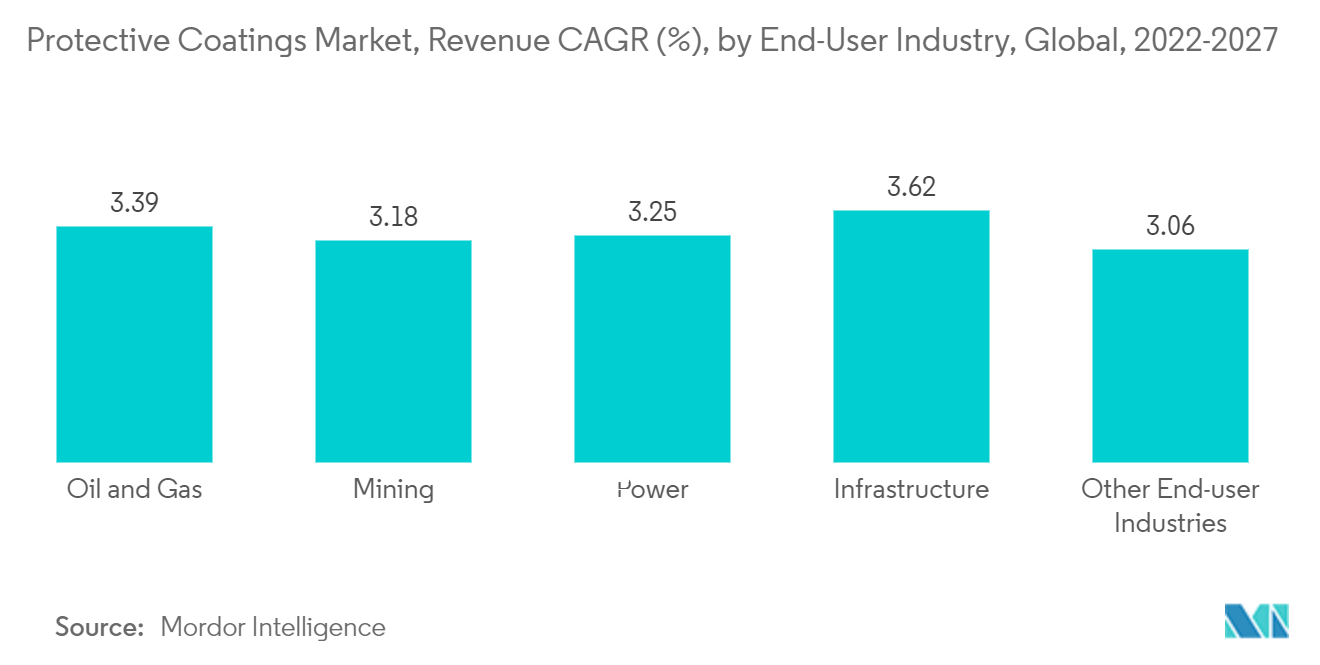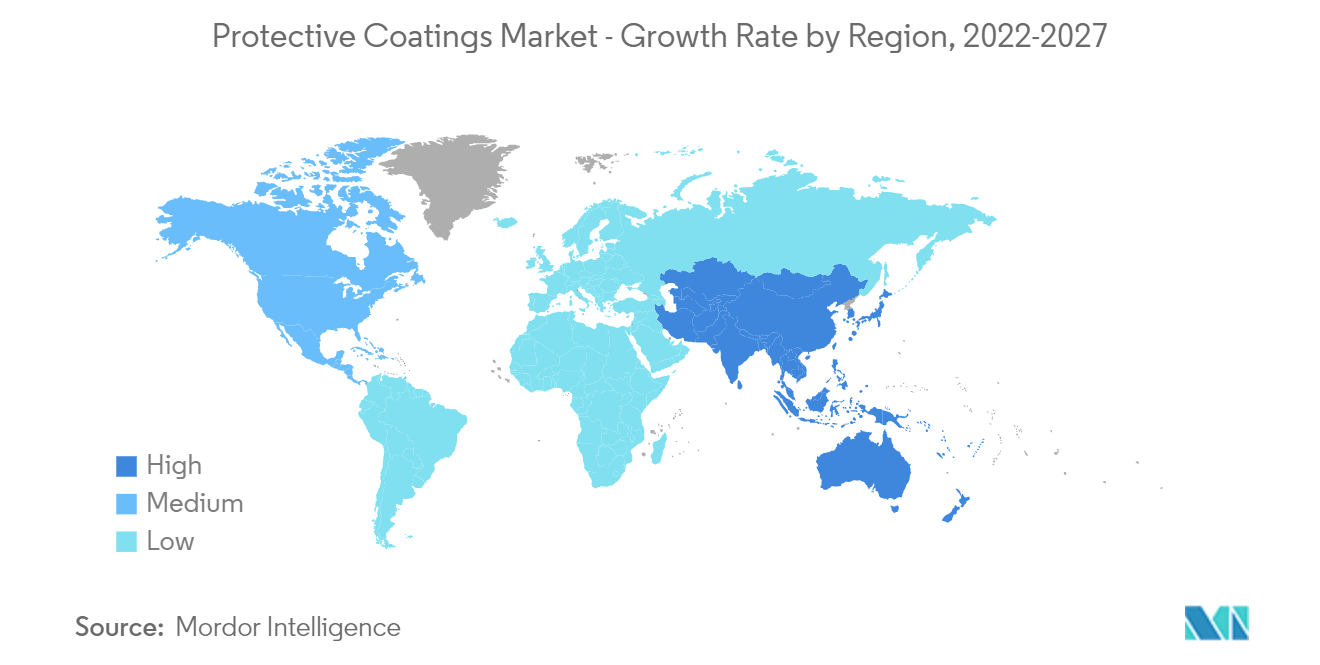Market Trends of Protective Coatings Industry
This section covers the major market trends shaping the Protective Coatings Market according to our research experts:
Increasing Demand from the Infrastructure Sector
- The infrastructure industry is the key consumer for the protective coatings market. Surface deterioration of a structure is a major problem in the infrastructure industry. Surface deterioration may lead to structural problems due to the loss of cover and corrosion of surface reinforcements. To minimize the deterioration, protective coatings are used. The coating material should be durable, bond well to the surface of the substrate, and be compatible if there is an expansion or a contraction during temperature changes.
- A 100% solid/rigid structural polyurethane coating is likely the technology of choice for infrastructure protection in harsh environments. 100% solid/rigid structural polyurethane coating is also an anti-corrosive coating for virtually any type of steel structure.
- Countries such as India, Germany, the United States, and China, among others, are witnessing increasing projects and investments in the infrastructure sector. Hence, witnessing the consumption of protective coatings.
- In India, one of the crucial components that drive and sustain economic growth is infrastructure, as it is critical to improve and maintain the country's manufacturing competitiveness leading to higher growth.
- Key challenges in India's infrastructure sector are land acquisition policies, implementation delays, and the risk of project overruns caused by bureaucratic delays. However, the current government ensures minimizing such delays, reducing complexities, and improving project transparency to increase the pace of infrastructure projects.
- The government launched the National Infrastructure Pipeline (NIP) for FY 2019-25, an INR 111-lakh-crore (~USD 1.5 trillion) group of infrastructure projects aimed at improving the ease of living and business environment.
- Initially, it was earmarked for 6,835 projects and expanded to 7,400 projects in 2021. Roads, housing, urban development, railways, conventional power, renewable energy, and irrigation account for most of the project value.
- Currently, North America has started significant projects in the first quarter of 2022; the projects include the USD 8,560 million Ontario Line Subway project, the USD 3,000 Million Steel Mini Mill project, the USD 3,000 million Osceola Steel Plant project, and other projects.
- In August 2022, Saudi Arabia also started constructing the Jeddah Central development project. The USD 20 billion infrastructure project involves the construction of four landmarks, including a museum, a sports stadium, a coral farm, and an opera house. Moreover, at least 17,000 houses for citizens and over 3,000 hotels and tourism sites are also to be built.
- Based on the aspects above, the infrastructure segment is expected to dominate the market.

Asia-Pacific to Dominate the Market
- The Asia-Pacific region dominated the global market. China is estimated to hold the largest market share globally.
- China has the largest construction market in the world, encompassing 20% of all construction investments globally. In China, the construction industry grew rapidly in 2020, but the growth was restricted due to the pandemic. The construction sector supported the economic growth in the country whenever major slowdowns occurred.
- The Chinese infrastructure sector is estimated to hold the largest share in the country of the market studied. The country has the largest construction market in the world, encompassing 20% of all construction investments globally.
- China is a hub for chemical processing, accounting for a major chunk of chemicals produced globally. With the rising demand for various chemicals globally, this sector's demand for protective coating is projected to increase during the forecast period.
- In China, several projects commenced construction in the fourth quarter of 2021, including the USD 7.2 billion Wuhan Chow Tai Fook Financial Center in Wuhan, Hubei, the USD 4.2 billion 2,000MW Qingdao Shenyuanhai Offshore Wind Farm and the CNY 18.1 billion (~USD 2.8 billion) Liuheng Sea-Crossing Bridge project.
- Furthermore, the infrastructure sector in India is an important pillar of the country's economy. The government is taking various initiatives to ensure the timely creation of excellent infrastructure.
- In India, The National Infrastructure Pipeline (NIP), which was launched with 6,835 projects, has been expanded to 9,335 projects with total envisaged investments of almost 108 trillion between FY20 and FY25.
- India produces about 95 minerals, including ten metallic minerals, three atomic minerals, four fuel-related minerals, 23 non-metallic minerals, and 55 minor minerals. This makes India one of the major mining countries in the Asia-Pacific region. Many private players are investing actively to boost the mining sector.
- All the aforementioned factors make the Asia-Pacific region dominant in the global market.


